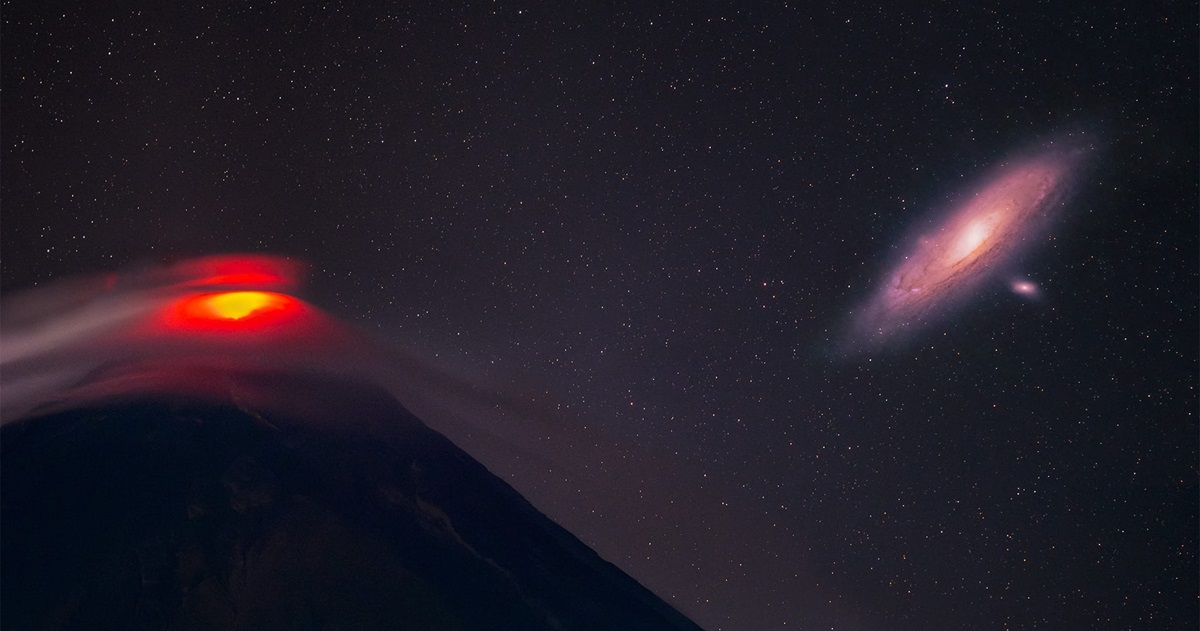Astrophotographer captures image of Andromeda galaxy, Mayon Volcano in one frame

An astrophotographer from Quezon City captured a majestic image of the Andromeda galaxy and the Mayon Volcano in one frame.
As seen in Kuya Kim's report on "24 Oras Weekend," Sunday, MJ Magallon's dream shot showed the glowing crater of Mayon with our neighboring galaxy in the background.
Located 2.5 million lightyears away from Earth, Andromeda is the nearest major galaxy to the Milky Way, the home of our Solar System.
The spiral galaxy is the farthest object that our naked eye can see and can be visible at night in the Andromeda constellation.
According to Magallon, it took him two attempts to capture the shot.
"Doon sa kuha ko na 'yun 'yung Mayon para siyang magnet ng ulap eh so lahat ng ulap pumupunta sa kanya halos so isa pa po yun obstruction," he said.
"Very rare 'yung ganung klase ng photograph kasi it takes precise planning and technique to do it."
Some, however, are doubtful that the photo is authentic.
Dr. Dominic Guaña, a physicist at the Philippine Space Agency, said the photo is may have been blended or edited.
"Andromeda galaxy po 'yung photo na yun. Subalit 'yung laki ito po yung misleading. Hindi po ganun kalaki 'yun pag kinunan kasabay ng Mayon Volcano," Guaña said.
"Possibility po niyan is separate 'yung Mayon Volcano and kinunan din ng separate 'yung Andromeda galaxy."
Magallon denied that this is the case.
"I can contest that kasi if you’re using telephoto lens... hindi itsurang star ang Andromeda Galaxy. I took a series of photos habang palubog si Andromeda sa likod ni Mayon. Pumili ako ng pagpapatung-patungin ko. Sa astrophotography, tinatawag nila 'tong composite. Walang pinalitan, walang binawasan, pinagpatong patong lang just to improve the image quality."
"Ang real value ng photograph is nakunan ko sila nang sabay in one frame. Kaya proud ako sa image na 'yun."
—Jade Veronique Yap/MGP, GMA Integrated News





